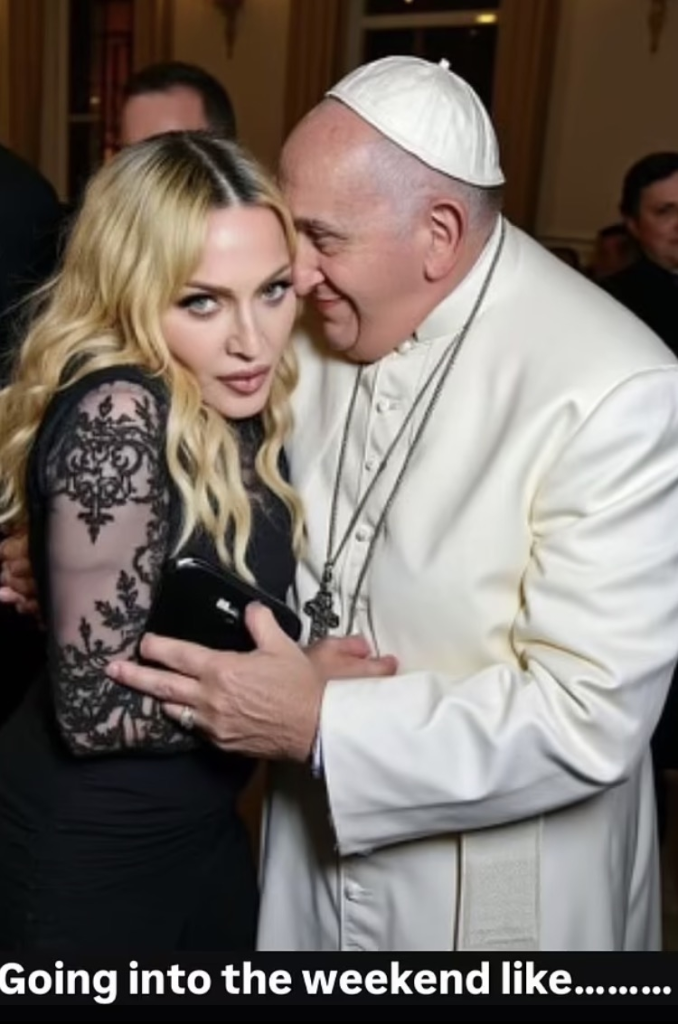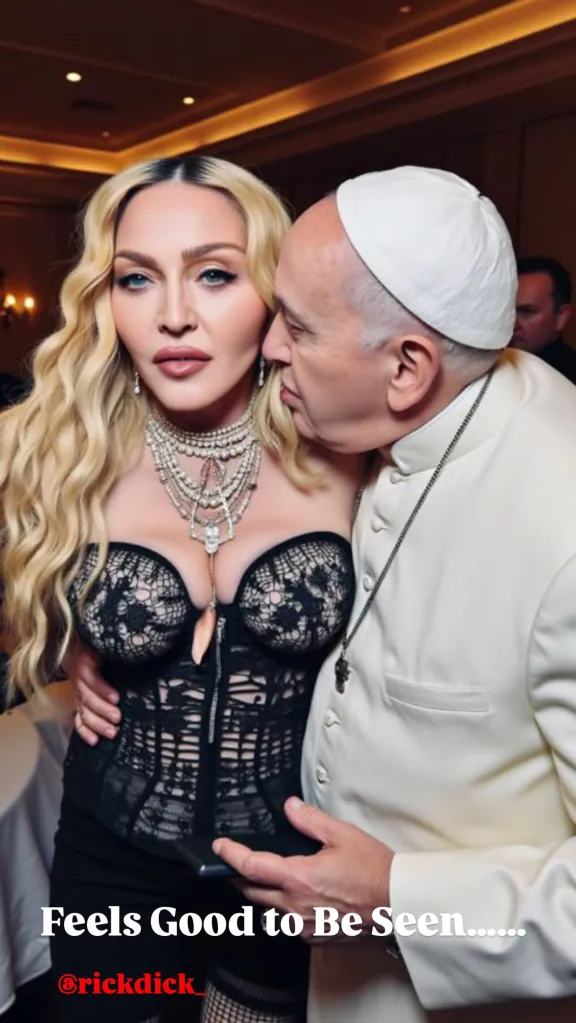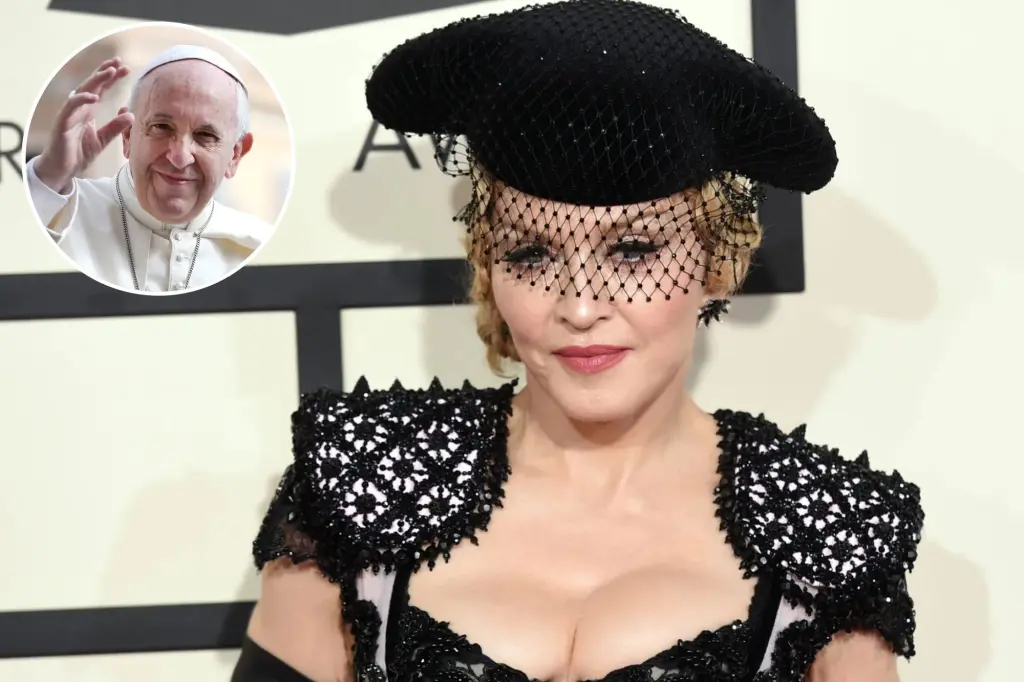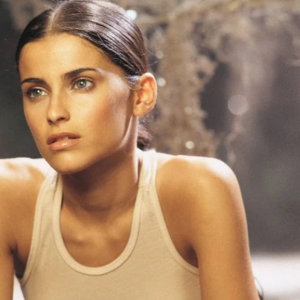Madonna, never one to shy away from controversy, has once again found herself at the center of a heated debate. Her recent social media posts featuring AI-generated images of herself with Pope Francis have left the internet divided. While some see it as harmless fun, others are calling it disrespectful and offensive. Let’s unpack the details of this polarizing incident and explore the ethical questions it raises about the use of AI-generated content.
What Happened? The AI Images That Set the Internet Ablaze

Late on Friday, Madonna shared a series of AI-generated images on her Instagram Story. These images depicted her in intimate, provocative poses with Pope Francis.
In one image, the 87-year-old religious leader is seen embracing Madonna, 66, with his nose touching her cheek. She captioned it, “Going into the weekend like…”
A second image took things further, showing Madonna in a revealing corset as the Pope appeared to lean in for a kiss. Her caption read, “Feels good to be seen…”
The posts quickly went viral, sparking widespread backlash. Critics labeled the images “creepy,” “disrespectful,” and “ridiculously inappropriate.”
AI-Generated Content: Creative Experimentation or Ethical Nightmare?
AI technology has advanced to the point where creating hyper-realistic images is accessible to nearly everyone. Platforms like X (formerly Twitter) and Instagram have made it easier to generate and share such content.
While this technology has opened up new avenues for creative expression, it has also introduced complex ethical dilemmas. The ability to place public figures in fabricated scenarios blurs the line between art and exploitation.
In Madonna’s case, critics argue that using AI to generate such intimate and controversial depictions of a revered religious figure crosses a moral boundary. For many, the Pope symbolizes sacred values, and using his likeness in this way feels deeply offensive.
Public Reaction: Outrage and Division
The internet’s response to Madonna’s stunt has been swift and polarized. Social media platforms lit up with comments, ranging from shock to condemnation.
- One user wrote, “Disgusting! This is beyond disrespectful. I pray for her soul.”
- Another commented, “This is just plain weird… she’s completely lost it.”
- Others dismissed it as another attention-seeking move, calling it “creepy” and “distasteful.”
While Madonna has always been known for pushing boundaries, some argue that this time she may have gone too far.
Madonna’s Embrace of AI: A Double-Edged Sword
Madonna’s experiment with AI-generated content aligns with her long-standing reputation as a trendsetter. She has always been unafraid to push artistic and technological boundaries. However, this incident highlights the darker side of AI’s growing presence in pop culture.
Madonna isn’t the only celebrity navigating this new frontier. Earlier this year, Taylor Swift faced a similar controversy when explicit AI-generated images of her circulated online. Unlike Madonna, Swift was a victim rather than a participant, sparking outrage among her fans and calls for stricter regulations against deepfake technology.
The Ethical Dilemma of AI Creations

The rise of AI-generated content raises fundamental questions about ethics, creativity, and accountability. Where should we draw the line between provocative art and offensive exploitation?
In Madonna’s case, the use of the Pope’s image for provocative AI content strikes many as disrespectful, particularly given the deeply religious significance he holds for millions worldwide.
This controversy also underscores the lack of regulations surrounding AI-generated content. As the technology becomes more sophisticated and accessible, the potential for misuse grows exponentially. Without clear guidelines, such incidents are likely to become more common.
Navigating the Challenges of AI in Pop Culture
As celebrities increasingly interact with AI, both willingly and unwillingly, the challenges of managing its use become evident. Madonna’s case highlights the risks of using AI as a provocative tool, while incidents like Taylor Swift’s show how it can be weaponized against public figures.
Some potential solutions to address these challenges include:
- Stronger Regulations: Governments and tech companies must establish clearer policies on AI-generated content to prevent misuse.
- Education and Awareness: Raising public awareness about the risks and limitations of AI can help people identify and question fabricated content.
- Legal Protections: Celebrities and public figures should have access to stronger legal frameworks to combat unauthorized use of their likeness.
Why Madonna’s Stunt Is More Than a Social Media Moment

At first glance, Madonna’s AI images might seem like another fleeting celebrity controversy. However, they represent a broader cultural and ethical challenge posed by AI technology.
Her actions have sparked an important conversation about respect, accountability, and the responsibility that comes with using powerful new tools. The controversy also highlights the growing need for public discourse on how we balance creativity with ethical considerations.
Conclusion: The Power and Pitfalls of AI in Art
Madonna’s provocative AI-generated images featuring Pope Francis have ignited a fierce debate, forcing us to confront the ethical implications of rapidly advancing technology. While AI offers incredible opportunities for creative expression, it also demands a heightened sense of responsibility and awareness.
This incident serves as a wake-up call for society to address the potential for misuse while embracing the possibilities of AI in a thoughtful and respectful way. Whether you view Madonna’s stunt as art, a misstep, or a publicity move, one thing is clear: AI is reshaping how we think about creativity, controversy, and accountability in the digital age.
So, where do we draw the line? As AI continues to blur the boundaries between reality and fabrication, it’s a question we’ll all need to grapple with.


